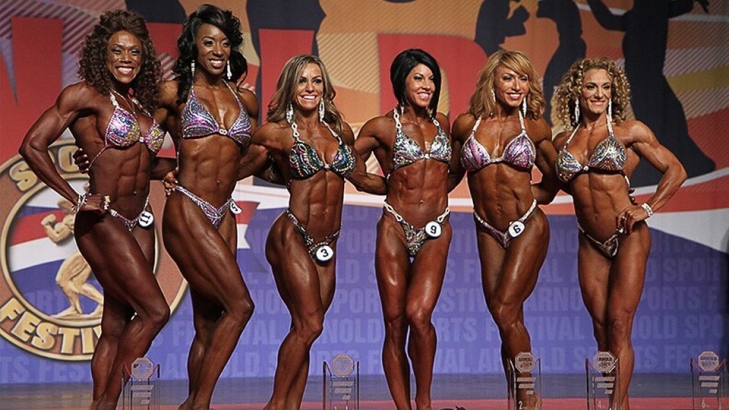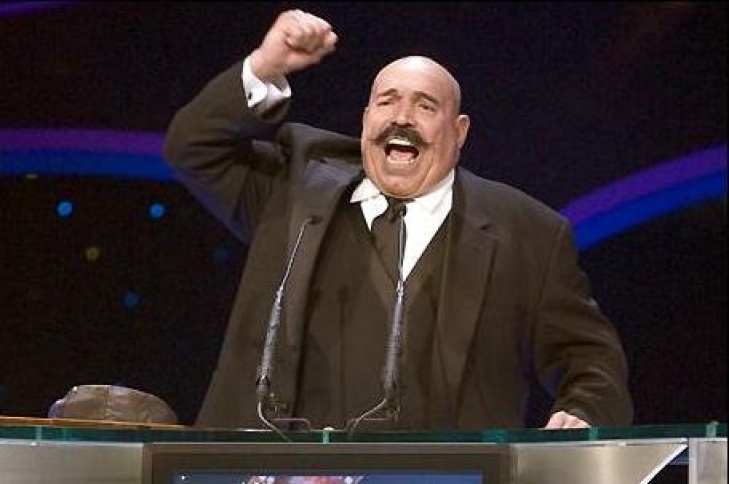
Committee Chairman
6 Tips and Strategies for Women Bodybuilders
Bodybuilding is a sport that calls for commitment, self-control, and labor. Although generally thought of as a male-dominated industry, more and more women are getting into bodybuilding and succeeding. You could have certain particular difficulties and obstacles as a female bodybuilder, but with the appropriate attitude and techniques, you can go through them and accomplish your objectives. These are six ideas and tactics for female bodybuilders to get you started.
Set Realistic Goals
For any athlete, but especially for female bodybuilders, setting realistic goals is crucial. It can be tempting to compare yourself to other male or female bodybuilders, but doing so could hinder your development. Instead, concentrate on creating attainable objectives that are precise, quantifiable, and time-bound. For instance, set a goal to lower your body fat percentage by 2% in six months or to increase your bench press by 10 pounds in three months.
Prioritize Nutrition and Take Supplements
The need for nutrition for bodybuilders who identify as females is considerably greater. Women must pay special attention to their food in order to develop the lean, muscular figure they seek because they have a higher body fat percentage than men. Make sure your diet is well-balanced and contains a sufficient amount of protein, good fats, and complex carbohydrates. A licensed dietician might be able to help you create a food plan that is customized to your needs.
When it comes to achieving muscle gains, it can be beneficial for women bodybuilders to explore supplements like steroids that are specifically designed to meet their needs. Exploring safe steroid options, such as the CrazyBulk Stack, can be advantageous for attaining muscle gains. By incorporating this supplement into your training regimen, you can potentially experience improved muscle growth and enhanced performance. Remember, it's always important to prioritize safety and choose products that are specifically tailored to your body and goals.
Lift Heavy
Resistance training is necessary to develop muscle, and the most efficient way to do this is to lift heavy weights. It's a common misconception that lifting large weights will make a woman fat or appear masculine. As women's testosterone levels are lower than men's, they cannot gain muscle mass as quickly or as easily. Lift weights that are difficult for you, and as you gain stronger, progressively increase the weight.
Don't Neglect Cardio
Cardiovascular exercise is crucial for overall fitness and health, whereas resistance training is crucial for gaining muscle. Cardiovascular activity lowers the risk of developing chronic diseases, improves endurance, and burns calories. Include cardio in your training plan, but be careful not to overdo it because too much cardio can prevent muscles from growing. At least 150 minutes per week of moderate-intensity cardio should be completed through activities like brisk walking, cycling, or swimming.
Rest and Recover
In order to gain muscle, rest and recovery are equally as crucial as training. After an exercise, your muscles require recovery time in order to heal and get stronger. Be sure you get enough rest, drink lots of water, and take rest days. To lessen soreness and accelerate recovery, think about combining techniques like foam rolling or massage.
Seek Support
Particularly for women, bodybuilding may be a difficult and isolated activity. Finding encouragement from other female bodybuilders, whether in a gym setting or online forums, can be beneficial. Having a support network can help you stay motivated, exchange advice and tactics, and jointly enjoy your victories.
Conclusion
In conclusion, these six pointers and tactics are essential for female bodybuilders to succeed in their sport. A successful bodybuilding journey includes a number of key ingredients, like setting realistic objectives, putting nutrition first, lifting heavy, including cardio, resting and recovering, and looking for support. Female bodybuilders may overcome any challenges and develop the physique of their dreams with commitment, discipline, and hard effort. As everyone is different and requires a distinct approach, keep in mind to concentrate on your own development and refrain from comparing yourself to others. Women bodybuilders can become better athletes by employing the advice and techniques listed here.
From Sidelines to Spotlight: The Importance of Coaches in the NFL
A head coach in the NFL is responsible for leading a team of professional athletes towards success on the field. This role requires a combination of skills, including leadership, decision-making, organization, and communication.
A great coach has the ability to develop a bond with the team, express their love for the game, and motivate players before every game. They usually hold "keep it real" meetings to ensure players know where they stand at all times. As the most valuable head coach position in sports, a good NFL coach can solve hundreds of football problems during a season.
Key Qualities of Successful Football Coaches
Successful football coaches possess several key qualities that contribute to their effectiveness in leading a team. These qualities include creating a positive team culture, focusing on building strong relationships, fostering a growth mindset, emphasizing the importance of teamwork, and instilling confidence in their players.
Poor self-confidence or a fear of failure are just two of the mental barriers that may prevent many talented players from reaching their full potential. A good coach will build their players up and help them overcome any hurdles in front of them.
The Impact of Coaching on Team Performance
Coaching plays a significant role in determining a team's performance in the NFL. A well-coached team is more likely to succeed, as the coach's strategies and tactics can create confusion for the opposing team and exploit their weaknesses.
For example, the New York Jets gamelines have been impacted by the coaching strategies employed by their head coach, Robert Saleh. A good coach can also help players develop their skills and improve their overall performance on the field.
The Evolution of NFL Head Coaches
Over the years, the role of NFL head coaches has evolved, with younger coaches entering the league and bringing fresh perspectives and innovative ideas. This shift has led to a more dynamic and competitive environment in the NFL, as teams strive to adapt and stay ahead of their rivals.
The younger generation of coaches is more focused on building strong relationships with their players and fostering a positive team culture, which can contribute to improved performance on the field.
The Challenges Faced by NFL Coaches
NFL coaches face numerous challenges in their quest for success, including managing a diverse group of players with varying personalities and skillsets, dealing with injuries and roster changes, and navigating the pressures of high-stakes games and playoffs.
Additionally, coaches must adapt to the ever-changing landscape of the NFL, including new rules, emerging strategies, and the increasing importance of analytics in decision-making.
The Future of Coaching in the NFL
As the NFL continues to evolve, so too will the role of head coaches. With advancements in technology and analytics, coaches will need to embrace these tools to stay ahead of the competition.
Also, the emphasis on building strong relationships and fostering a positive team culture will continue to grow in importance, as teams recognize the value of a united and motivated group of players. Ultimately, the future of coaching in the NFL will be shaped by those who can adapt, innovate, and inspire their teams to achieve greatness on the field.
Conclusion
The importance of coaches in the NFL cannot be overstated. From developing game-winning strategies to nurturing player growth and fostering a positive team environment, coaches play a crucial role in determining a team's success. As the league continues to evolve, so too will the role of head coaches, with an increasing emphasis on relationship-building, innovation, and adaptability.
RIP: The Iron Sheik
Professional wrestling said goodbye to one is most colorful performers of all-time, The Iron Sheik, who passed away at the age of 81.
Born Hossein Khosrow Ali Vaziri in Iran, The Iron Sheik became a decorated amateur wrestler in his native country. Moving to the United States in 1971, he was later a coach on the U.S. Olympic Greco Roman Wrestling Team.
In 1972, he trained under AWA World Heavyweight Champion, Verne Gagne, and embarked in a career as a pro wrestler, but it was not until the end of the decade before he became a star. Now with a shaved head and distinct moustache, Sheik leaned into the anti-Iranian sentiment that stemmed from the Iranian Revolution and subsequent Hostage Crisis. He was the perfect anti-American heel, and would have success in the WWWF, Florida, Mid-South, Georgia and the Carolinas.
Returning to the WWF in 1983, The Iron Sheik shocked the wrestling world by ending Bob Backlund’s five-year-plus reign as the WWF World Heavyweight Champion. It was short-lived, as he dropped the title to Hulk Hogan a month later, but he remained a top heel in the WWF over the next few years, feuding with stars like Sgt. Slaughter and “Hacksaw” Jim Duggan, and would win the World Tag Team Titles with Nikolai Volkoff.
The Iron Sheik was fired from the WWF in 1987 when he was caught with drugs while travelling with his rival, Jim Duggan, though he would briefly a return a year later. After a failed run in the NWA, he had one more high-profile return in 1991, this time as Col. Mustapha. He would later appear on WWF programming as the manager of the Sultan in 1997, and would win the Gimmick Battle Royal at Wrestlemania 17.
In 2005, he was inducted into the WWE Hall of Fame, but achieved additional notoriety for his chaotic appearances in shoot interviews and the Howard Stern show. Vaziri, who had long since battled addictions to drugs and alcohol, would become clean later in life, and would entertain millions with his appearances and twitter activity.
We here at Notinhalloffame.com would like to extend our condolences to the fans, friends, and family of The Iron Sheik.
Jessica Pfund Shares 6 Coaching Strategies To Enhance Athletic Performance And Motivation
Are you looking for ways to increase your athletes' motivation and performance? Are you ready to improve team development, morale, and productivity? Becoming a skilled coach requires mastering techniques such as developing an appropriate training schedule, setting clear goals and expectations, fostering good communication among athletes, and providing meaningful feedback and praise. Below, Jessica Pfund will share various coaching strategies that can be implemented throughout any practice or game day to help enhance athletic performance while dramatically increasing motivation. Let's dive deeper into how coaches can capitalize on their athlete's potential by leveraging scientifically proven coaching strategies!
Establish Clear And Measurable Goals With Athletes To Provide A Tangible Way To Measure Success
As a coach or trainer, setting goals for your athletes is one of the most critical steps in helping them succeed. Establishing clear, measurable goals gives your athletes a tangible way to measure their progress and keeps them motivated to improve. Not only do plans give athletes something to strive for, but they also create a sense of accountability, as athletes are more likely to take ownership of their progress if they have a clear target to aim for. By setting specific benchmarks and regularly evaluating progress, you can help your athletes stay focused and motivated and ultimately achieve their full potential.
Create Engaging Practice Drills That Keep Athletes Motivated And Focused On The Task
As a coach or trainer, one of your primary objectives is to design practice drills to help your athletes hone their skills and improve their sport. But let’s face it; nobody wants to engage in monotonous exercises that feel like a chore. To keep your athletes motivated and focused, it’s crucial to create practice drills that are engaging and fun. These drills should challenge them to step out of their comfort zone and push themselves to their limits. Incorporating elements of competition and teamwork can also add an extra layer of excitement, inspiring your athletes to work harder to achieve victory. So whether it’s a new twist on a classic drill or a completely innovative idea, it’s worth putting in the time and effort to craft engaging practice drills that your athletes will look forward to every time they hit the field or court.
Use Positive Reinforcement To Reward Improvement, No Matter How Small
Motivation can be tricky, especially when it comes to self-improvement. That's where positive reinforcement comes in. We can motivate ourselves to keep going and build momentum toward our goals by rewarding minor improvements. Plus, it feels great to acknowledge our successes, no matter how small they seem. Celebrating progress is an integral part of the journey toward self-improvement, and it can be the difference between giving up and pushing through.
Encourage Open Communication Between Coaches And Athletes To Foster A Healthy Relationship Based On Trust And Respect
Open communication between coaches and athletes is crucial in any successful sports team. When a coach and athlete have a healthy relationship based on trust and respect, it can propel their performance to the next level. The athlete must feel that their coach is invested in their success and cares about their well-being. Meanwhile, coaches must understand their athletes' strengths and weaknesses to develop a winning strategy. Encouraging open communication between these two parties can lead to a bond beyond the playing field.
Develop Strategies To Help Athletes Manage Anxiety And Stress Before Significant Events Or Competitions
Competing at a high level can be an incredibly nerve-wracking experience for any athlete. Fortunately, there are effective strategies athletes can use to help manage these feelings and perform their best when it matters most. From deep breathing exercises to visualization techniques, coaches and sports psychologists have various tools to help athletes stay calm, focused, and confident. By incorporating these strategies into a regular pre-competition routine, athletes can learn to harness their anxiety and turn it into a source of strength and motivation.
Help Athletes Create An Action Plan For Achieving Their Goals, Including Breaking Them Down Into Smaller Tasks Or Steps
Breaking down our goals into smaller tasks or steps can make them more achievable and less overwhelming. It's like climbing a staircase, one step at a time. We can stay organized, focused, and motivated with an action plan. So let's take the first step toward our dreams and create our action plan today.
Final Thoughts
As a coach, it is essential to help athletes establish clear and measurable goals and provide them with the necessary tools for success, says Jessica Pfund. With motivating practice drills, positive reinforcement techniques, open communication between coaches and athletes, guidance on handling stress and anxiety, and action plans tailored towards achieving their goals, coaches can positively impact athletes' performance in practice and competitive settings. Through building meaningful relationships with athletes through these practices, coaches can equip their athletes with the skills they need to approach challenges confidently. It is clear that there is no one-size-fits-all plan when it comes to coaching; nevertheless, being aware of some beneficial best practices can set coaches up for success in helping their players reach their potential.





